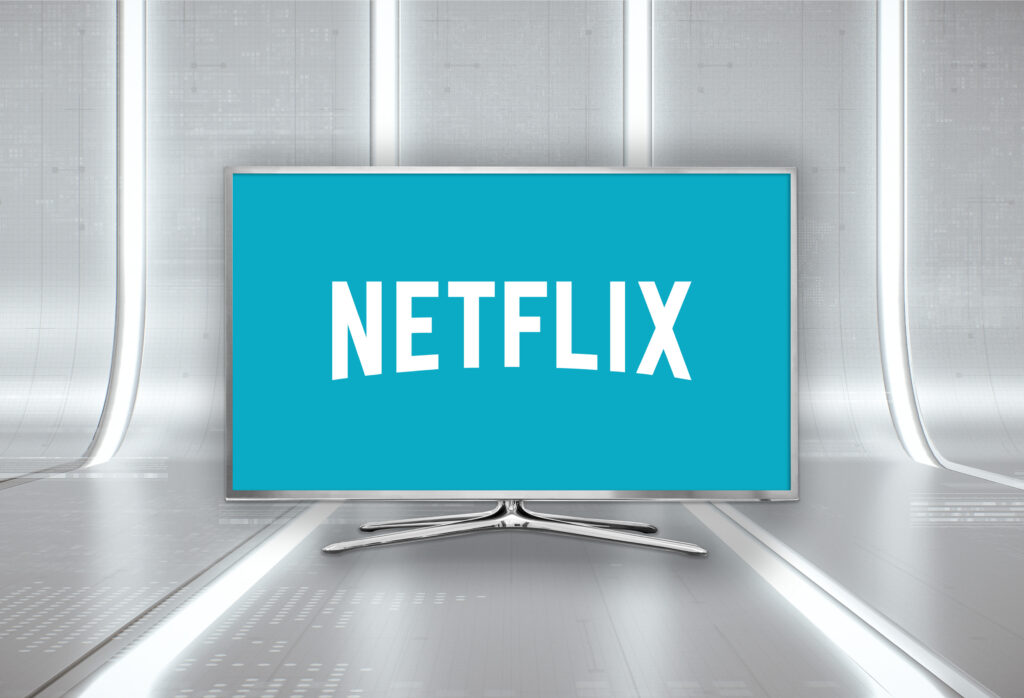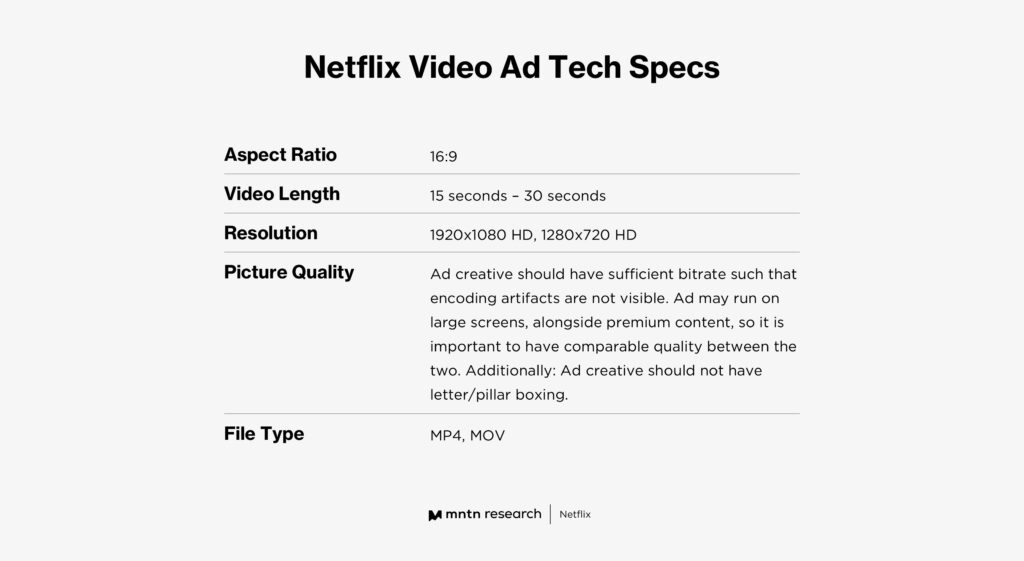Analysis
Forecasting the Future of Creative in the Next Wave of Ad-Supported Streaming
by Jacob Trussell6 min read
Abstract
- Netflix has released the technical specifications for video ads on their new ad-supported streaming tier.
- The specs reveal Netflix ads must retain a similar level of quality as their premium streaming content.
- These tech specs give marketers a glimpse at what creative may look like as premium streaming platforms, like Disney+ and Apple TV+, launch ad-supported options in 2023.
Remember when every marketer in adland started pivoting to video? It felt like the wild west, where ideas and concepts were flying through the air as we all tried to determine which creative approach would prove the stickiest for our respective brands.
But we’ve never really left that period of experimentation, have we? We’re still constantly testing out new creative to see what will resonate with consumers every month, but the playing field has grown much, much larger – and it’s only going to get more competitive as we venture into 2023. If you thought the last two years have been one helluva ride in adland, as we watch the next wave of ad-supported TV roll out, all we can say is next year is going to be a trip.
But will the video ads you produce for these new channels, from Netflix to Disney+, really be all that different from the ad creative you currently create for other platforms?
Maybe so. But also, maybe no?
With that being said, we do have some clues at the creative approaches brands will need to take as new ad-supported streaming options come online. Recently, Netflix announced the technical specifications video ads must conform to in order to run on their platform. This has given us a glimpse at how ad creative may change – and stay the same – in the new year.
Let’s dive into the specs and see what we can forecast.

What Can We Learn from Netflix’s Video Ad Specs
Netflix launched their first ad-supported subscription tier in the fall of 2022. Currently, for every one hour of content a user watches, they’ll be delivered between 4-5 minutes of ads. In conjunction with the launch, Netflix released a long list of video ad tech specs brands should keep in mind when strategizing their campaigns.
You can check out the full details here, but we’ve compiled a short list of the most important specs to know.

Doing a cursory review of Netflix’s video ad specs you’ll notice one thing: they look a lot like the specs for other CTV platforms (and even social media channels.) Videos must be in 16:9 aspect ratio (so the image fits natively on TV screens) and the ads can run between 15-seconds and 30-seconds long – all industry standards for streaming ad creative.
But amidst all of these familiar specs, one jumps out that feels unique: Picture Quality. The first point is that brands should ensure they use proper bitrates to avoid any digital artifacts that affect the overall quality of the visuals, but they make an important distinction in the second half of this specification. Video ads must have a similar level of quality as Netflix’s premium content.
Let’s put this into simpler terms: Netflix is retaining tighter creative control on their streaming ad experience. They want the ads on their service to be just as visually appealing as their most popular shows. That means lower cost DIY or UGC-style content that may have worked on other platforms won’t cut it on Netflix.
To further reinforce that ads must retain a similar level of visual quality as their premium content, Netflix also does not allow for letterboxing or pillarboxing. This is a technique where black bars are placed on the top and bottom, or sides, of a video so that it can exist within the 16×9 aspect ratio. In other words, if you have a 9×16 ad that’s been killing it on TikTok, you won’t be able to repurpose it for Netflix as it would require pillarboxing to feel native on the TV screen. Just imagine how jarring it would be to cut from the crisp cinematography of a show like Stranger Things to a pillarboxed UGC ad.
If you plan to run video ads on Netflix, your creative must be at a higher quality than you may have produced in the past. This means you’ll need to review your budget to ensure you are able to create ads at that level well before you decide to kick off your first Netflix ad campaign.
What Do We Know About Disney and Apple?
Long story short: not much yet. Apple has only entered exploratory discussions with media agencies about launching an ad-supported tier for Apple TV+. But recent reports about Disney’s plans have revealed some key info about what ads may look like on their platform. According to Variety, “Disney+ Basic will launch with about four minutes of ads per hour. It will start with 15- and 30-second spots but will expand to a “full suite of ad products” over time, Disney Advertising Sales president Rita Ferro said at an investment conference this spring. Disney+ with ads will not accept political or alcohol ads, nor will it run ads in kids’ profiles or against preschool programming.
A larger outstanding question is what that “full suite of ad products” will be, not just for Disney, but across this next wave of ad-supported streaming options. Will there be unique opportunities for brands to leverage Disney’s catalog of IP through unique placements, and will Netflix follow suit with their own cadre of hit TV shows? Will this lead to stricter creative control from the streaming services to ensure brand safety for the platform and their content? Could this ultimately blunt creative experimentation to the extent that ads on these platforms are less inventive than their FAST (Free Ad-Supported Streaming) counterparts?
Only time will tell what marketers will ultimately get to play with, but we’ve got a good feeling that whatever placements come out of these emerging ad-supported tiers will establish a new gold standard for CTV advertising.
Conclusion
The advertising landscape is always in flux, constantly changing in tandem with evolving consumer behavior to stay relevant in the market. And as economic issues have remained top of mind for many consumers over the past few years, ad-supported streaming has emerged as a cost-efficient solution for individuals and families to continue enjoying their favorite movies and TV shows without squeezing their wallets.
And luckily, as consumers shift from ad-free subscription services to more affordable, ad-supported models, their sentiments on ads have remained positive. According to MNTN Research:
- Nearly 7 out of 10 consumers believe that watching ads is just a normal part of the viewing experience of a streaming experience.
- 68% of streamers enjoy seeing ads that relate to the content they are currently viewing
- 73% of streamers think ads are more enjoyable when they feel personally relevant.
Currently, your creative approach won’t need to change all that much once you start producing videos for the next wave of ad-supported streaming services on Connected TV. But keep in mind: Netflix, Disney+, and Apple TV+ are some of the biggest streaming platforms in the world. That means all eyes will be on your ads once you decide to run on these platforms, so we recommend staying hands-on as you craft creative to launch your first campaign. After all, you only get one chance to make a stellar first impression.
Subscribe to the MNTN Research Weekly
Sign up to receive a weekly feed of curated research, sent straight to your inbox.